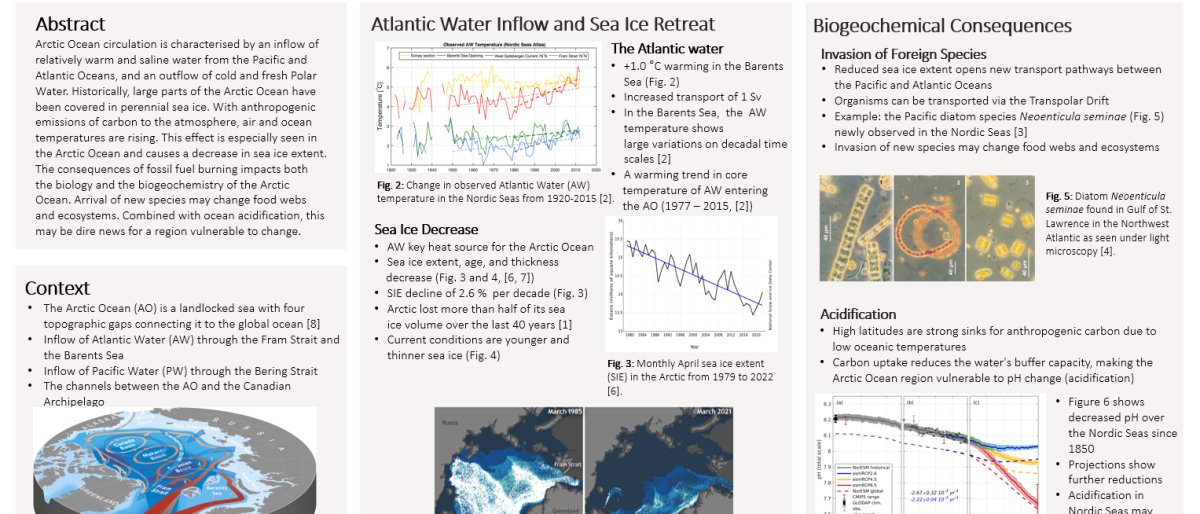Abstract
The Arctic Ocean circulation is characterised by an inflow of relatively warm and saline water from the Pacific and Atlantic Oceans and an outflow of cold fresh Polar Water. The Polar Water derives from river runoff and ice-melt. Historically, large parts of the Arctic Ocean has been covered in perennial sea ice. With anthropogenic emissions of carbon to the atmosphere, air and ocean temperatures are rising. This effect is especially seen in the Arctic Ocean. The increased heat content in both causes a decrease in sea ice extent. Atlantification of the water masses in the European inflow regions of the Arctic Ocean enhances this effect. The consequences of fossil fuel burning impacts both the biology and the biogeochemistry of the Arctic Ocean. An example is the Pacific diatom species Neodenticula seminae which for the first time in 800 000 years has been observed in the Nordic Seas. It is hypothesised that it has been transported via the Transpolar Drift. This is made possible due to the reduced sea ice extent. Another consequence is the acidification. The pH has decreased in the Nordic Seas since the start of the industrial revolution and is projected to decrease further. Atlantic Water cools down in the Nordic Seas on its way to the Arctic Ocean. The acidification of the Nordic Seas may therefore propagate into the Arctic Ocean. For an oceanic region vulnerable to changes in pH, this is dire news.
Poster number:
338_2
Authors:
Sofie Arstein,
Dana King
& Ingrid Sælemyr


